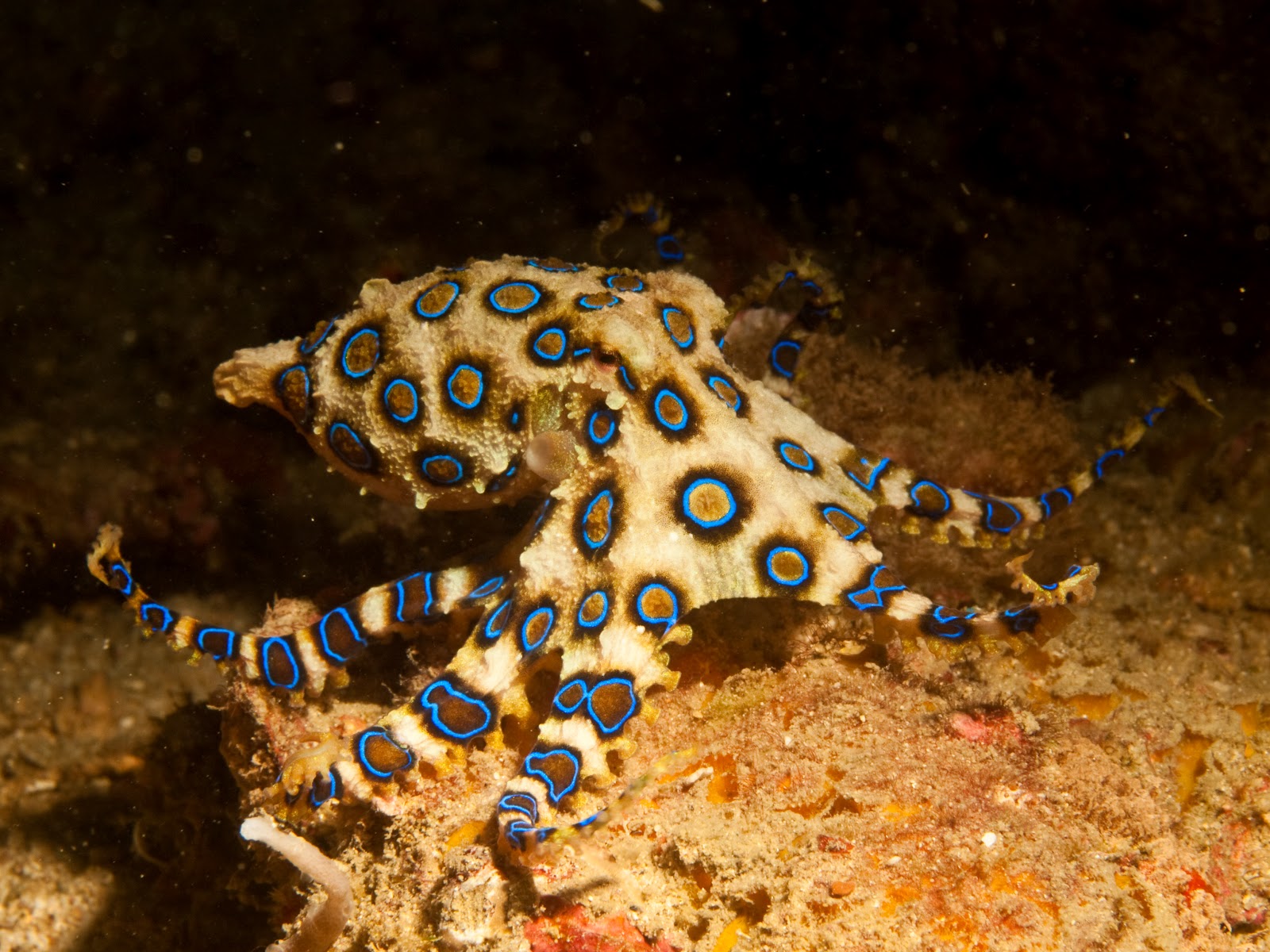Due to extended hot weather in South Australia over the past weeks, our Metropolitan Coasts are experiencing an increase in sightings of Jellyfish and Blue Ringed Octopus. We encourage the public to check their surroundings for potentially dangerous marine animals whenever they enter the beach environment and to inform themselves on how to deal with a sting or bite should they suffer one.
JIMBLES
One of the most common Jellyfish in Adelaide waters is the Carybdea more commonly known as a Jimble. Jimbles are transparent bell-shaped creatures approximately 1.5-3cm in diameter and they have four tentacles, one in each corner, 5-15cm long. Jimbles can be hard to spot in the water, they can swarm in large numbers on the surface of the water or along the sand underwater.
Jimbles are fairly common and are not lethal. Signs that you may have experienced a Jimble sting include; thin raised welts, red, flaring skin, sometimes itchy and minor pain especially on young children or soft skin.
If you have been stung by a Jimble, wash off any remaining tentacles, apply vinegar if available and a cold pack for ten minutes or until pain subsides. If pain or symptoms persist or worsen refer to a doctor. Do not rub sting with sand or urinate on stings, neither treatment works and in some cases may irritate the sting zone further.
BLUE BOTTLE
Blue Bottles, also known as Physalia are small, blue-tinged, semi-circle shaped Jellyfish measuring from 3cm-15cm with tentacles that can range between 10cm and 10m. They can be difficult to detect given the length of their tentacles and the camouflage of their blue-tinged transparency.
Symptoms of a Blue bottle sting include; a strong pain and burning sensation, a raised white welt with a prominent ‘beading’ effect and occasionally difficulty breathing.
When treating a blue bottle sting it is important to keep the patient resting and under constant observation, do not allow rubbing of the sting area. Wash the sting site off with sea water not freshwater to remove any leftover stinging cells or tentacles, be aware that Blue Bottle Tentacles can continue sting even after they have washed up on the beach. Place the patients stung area in hot water for approximately 20 minutes, a warm bath is ideal. If the pain is unrelieved by the heat, or if hot water is not available, apply cold packs or wrapped ice. Send for medical aid if symptoms persist
BLUE RINGED OCTOPUS
The Blue-ringed Octopus is a small eight tentacle octopus which could fit into the palm of your hand. They are generally a deep brown to golden colour with blue rings that flash when the octopus feels threatened.
The blue-ringed octopus bite is highly poisonous to humans. There is no antivenin available for blue-ringed octopus bites. Do not handle or carry a blue-ringed octopus.
If you or someone you know has been bitten by a blue-ringed octopus, call 000 or find a Surf Lifesaver in the area immediately.
Most bites cause minimal pain for the first 5-10 minutes then begin to throb and may get numb and involve the rest of the limb. Bleeding from the bite site can be excessive. Patients may experience nausea, vomiting, changes in vision and difficulty breathing.
After approximately 10 minutes, the victim may have difficulty breathing, become paralyzed, and require artificial ventilation until they can be transported to a hospital. This is often preceded by numbness or loss of feeling around the lips and mouth. If medical care is not provided emergently, respiratory failure may occur, which may result in cardiac arrest, and death.
This bite is considered a medical emergency so do not wait for symptoms to develop; quickly get the person bitten out of the water and, if possible, call 000 and consider transport to the nearest hospital.
Use the pressure immobilisation technique. Use an elastic bandage (similar to ACE bandage) to wrap the limb starting at the distal end (fingers or toes) and wrap toward the body. It should be tight, but the fingers and toes should remain pink so that the circulation is not cut off.
The extremity should also be immobilized with a splint or stick of some sort to prevent it from bending at the joint(s).The elastic bandage should be removed for 90 seconds every 10 minutes and then reapplied for the first 4 to 6 hours. (Hopefully, medical care can be received within this time period.)
If 30 minutes or more have passed since the blue-octopus bite, the pressure immobilization technique is not likely to be helpful.
The duration of life-threatening symptoms is usually from 4 to 10 hours. After that time, surviving patients typically show rapid signs of improvement.
If the patient is having difficulty breathing, assist with mouth-to-mouth ventilation.




